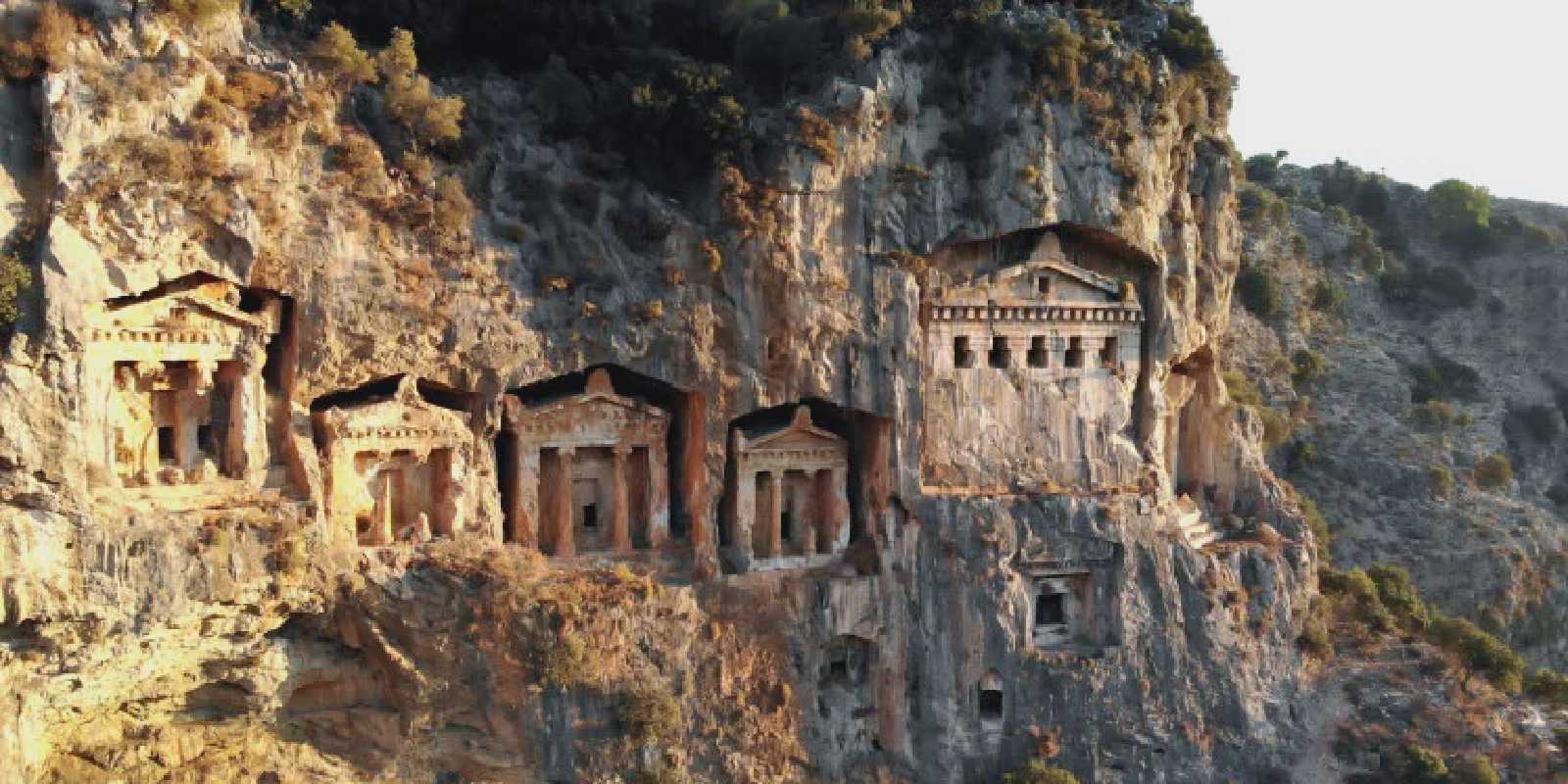Kaunos Ancient City And Kings Tomb

Kaunos
Kaunos Ancient City, located within the boundaries of ancient Caria, is now situated in the district of Köyceğiz in Muğla province, Turkey. It is also close to Dalyan, thus finding its place among the places to visit in Dalyan. The city was built on the slopes of a mountainous hill around the Calbis River, known as Dalyan River today. Once a significant port city in terms of trade, the city has moved away from the sea today due to the formation of the Dalyan Delta as a result of the sedimentation of the sea.
History
Dating back to the 6th century BCE, this city was founded within the boundaries of Lycia-Caria by Kaunos, one of the twin children of Miletus according to myth. The rock tombs, which can also be seen from Dalyan and have their origins dating back to the Urartians, were built in the 4th century BCE and later used in the Roman period as well. Among these rock tombs, there are three stone beds where the deceased were laid to rest. On the facade, there are two Ionian columns with friezes and pediments. One of the pediments features lion reliefs associated with the name of the city.
Lion Figure in Kaunos

The lion statue found between the Small Fortress and the ancient port in the northwest of the city has provided an additional perspective for Kaunos. Analyzed along with female statues and columns found within a sacred building, the Kaunos Lion Statue gains meaning for us. Representing a protective attribute against evils, the lion actually symbolizes Kaunos from 2,000 years ago. The bull’s head beneath the lion’s right paw symbolizes enemy civilizations against the civilization of Kaunos. Unfortunately, like many artifacts, this statue is exhibited in the British Museum.

Kaunos, an ancient port city rich in archaeological and cultural heritage, also used its own currency in trade. Understanding the geography and climate very well, Kaunos Ancient City, with its well-constructed buildings, used its own coins. If we were to return to the founding of the Kaunos Ancient City and examine the continuation of the myth, we need to tell a short story:
According to the myth of the poet and Roman historian Ovid, the story of Kaunos and Byblis goes as follows: Byblis, the female twin of King Miletus, falls in love with her twin brother Kaunos and writes him a letter expressing her feelings. Upon reading this letter, Kaunos feels anger and disgust towards his sister. When the king cannot accept this and banishes his son Kaunos, Kaunos leaves his father’s land with his supporters and founds the city of Kaunos. Unable to bear the longing for her brother and the insults she received, Byblis weeps until her tears dry up and then jumps from the top of a rock to commit suicide. However, the Nymphs take pity on Byblis and transform her into a spring. According to this myth, the labyrinthine canals in Dalyan were formed by Byblis’s tears. The establishment of Kaunos is thus imbued with sadness.
Kaunos, with its unique legend and its status as a valuable ancient city of Lycian history, offers attractions such as Rock Tombs, Walls, Fortresses, and Ancient Theater, which you can visit both by land and sea routes. Even better, you can easily observe the Kaunos Ancient City and the Dalyan Channels by taking a Microlight flight in Dalyan, which hosts this legend.